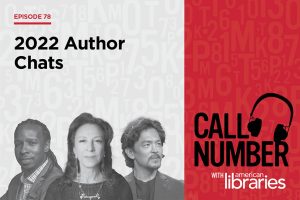
The work of medical librarians is essential and varied. Housed within academic medical libraries, hospitals, corporate libraries, and insurance companies, medical librarians provide information and resources to improve patient care, promote public health, and support medical education and research. Responsibilities are constantly evolving with technology and new programming.
American Libraries spoke with the creators of two initiatives—virtual reality programs for medical students at Greenblatt Library at Augusta (Ga.) University (AU) and a specialized book club for pediatric staff at Children’s Hospital Los Angeles (CHLA). Both innovations were presented at the 2022 Medical Library Association’s Annual Conference and demonstrate the impact of medical librarianship.
Entering a virtual world
Virtual reality (VR) was brought to Greenblatt Library in part by Jennifer Davis, instructor and scholarship data librarian at AU; Lachelle Smith, health sciences librarian at AU; and Gail Kouame, former assistant director of research and education services at AU and now director of Charles M. Baugh Biomedical Library at University of South Alabama in Mobile. The three collaborated to create two VR programs and a designated room for VR technology at the library with the help of AU’s School of Computer and Cyber Sciences and the Computer and Game Design and Development program at Kennesaw (Ga.) State University.
Can you tell us more about the VR projects you collaborated on?

Davis: Lachelle and I collaborated on a pilot project creating a VR escape room game that would teach data management skills to health sciences students, particularly doctoral students—but anybody could play and use the game. We collaborated with undergraduate senior computer science students at AU.
Kouame: There were also VR experiences that emulated vision deficits, from things like macular degeneration or diabetic retinopathy, as well as the effects of Parkinson’s disease. Students are asked to virtually do certain tasks like open a pill bottle, open a shampoo bottle, turn on the shower, those kinds of things. There was also a simulation for post-stroke rehabilitation. The idea of those projects and experiences was to build empathy in health sciences students who would be dealing with patients with those issues.
How did the idea for creating VR programs come about?
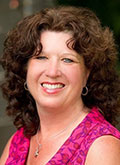
Kouame: I was approached by some folks from our medical college; they had already started working with virtual reality. AU’s computer science school asked if we might be willing to designate a virtual reality space in the library as a way to expand that program and that project.
Davis: Research and data management principles are not always the most exciting things to learn about, so we wanted to create something that would get the students more engaged, and it was a fun project—something new for us to do. I have no VR experience; it was a very new thing for me to develop those skills.
What makes VR ideal for teaching students these concepts?
Kouame: The advantage of VR is it’s very experiential and very immersive. It allows a person to experience a situation as though it were almost real. It’s 3D: You’re in a space or in a room that is very close to being in a room with a real pill bottle or a real shampoo bottle. To me, it’s as close as you can get to sending somebody into, say, an elderly person’s apartment and having them open a pill bottle.
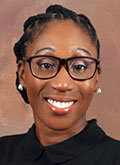
Smith: VR provides a lifelike scenario that students can actively explore and work with as opposed to passively listening to lectures.
What were the logistics of dedicating a whole room to VR programs at the library? What did you consider in terms of policies?
Kouame: The things we had to think about were: Who’s going to be in charge? Who’s going to monitor this thing? Who’s going to troubleshoot this thing? How are we going to get the equipment checked in and out? We had to work very closely with our access services department. It made a lot of sense for them to be involved because the room was very close to our information and circulation desk, and they would be the ones checking the equipment in and out. I have a colleague in Florida who had implemented something similar a couple of years prior, so I contacted him and asked him what they were doing in terms of policies and procedures. And I told him, “Imitation is the highest form of flattery.” So, we modified what he had already done at his library and came up with our own.
What feedback have you received from students?
Smith: We did have students take a survey when we did the pilot program, and I can say it was well received by them. They did offer some suggestions, and that’s because we had them, at the time, playing the games in a different environment than they are now. We took their suggestions and presented them to the computer science students we were working with. Students appreciated that we thought of implementing virtual reality, especially as an escape room. They just thought that was really innovative. And it actually helped them engage with the content better as opposed to a lecture.
Do you have any other tips for librarians who want to incorporate VR in their programming?
Smith: I just want to stress the power of partnership and leveraging the relationships that you have. Gail was instrumental in connecting Jenn and me with a computer science faculty member, but we had to first reach out to Gail to share our ideas. Don’t be afraid to share your ideas with other colleagues.
Kouame: Both projects were funded from an outside source through the network of the National Library of Medicine’s regional office, so we also had to go through our Sponsored Programs Administration. It always takes longer than you think when you’re involved with external funding sources, so allow time for all of that when you’re considering doing something like this.
Strengthening staff connections
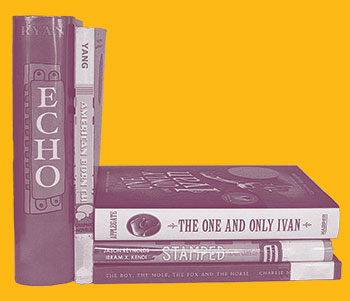 Pediatric hospital staff undergo many stressors serving their young patients. To alleviate that stress, CHLA’s clinical and research librarian Lynn Kysh and Literally Healing program manager Kyle Horne created Hardback Life, a book club for pediatric staff with a goal of creating empathy and fostering connections. The pilot program saw success as staff found a way to bond through reading children’s literature such as The One and Only Ivan by Katherine Applegate and The Boy, the Mole, the Fox and the Horse by Charlie Mackesy.
Pediatric hospital staff undergo many stressors serving their young patients. To alleviate that stress, CHLA’s clinical and research librarian Lynn Kysh and Literally Healing program manager Kyle Horne created Hardback Life, a book club for pediatric staff with a goal of creating empathy and fostering connections. The pilot program saw success as staff found a way to bond through reading children’s literature such as The One and Only Ivan by Katherine Applegate and The Boy, the Mole, the Fox and the Horse by Charlie Mackesy.
How did the idea for Hardback Life come about? What goals did you have in mind for the pilot program, and what outcomes were you envisioning for participants?
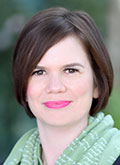
Kysh: This came as a twinkle in my eye. I usually tell people I’m a medical librarian with the heart of a children’s librarian. When I was in library school, it was that question of, “What kind of librarian do you want to be?” And I’m like, “I want to do children’s services or hospital medicine.” And they said, “That’s not a thing.” I kind of proved them all wrong.
Horne: Lynn happened to run into me, and we had this wonderful opportunity to talk about what this could be. Literally Healing is a program [at CHLA] that gives free books to patients and family members. Every single patient and their family member each receive a free book every day they’re at the hospital. Every year we give about 65,000 books away. Our clinicians get to see that, they get to be involved in it; the question we kept getting asked is, “Great, so can I get a book?” And we’re like, “We wish we could, but we can’t.” And they’ll ask, “Well, can we have something to do with you?”
We have these clinicians, and staff members in general, who have a real interest in engaging in this space. The opportunity to give this book club to our staff—who are really going through a lot here at the hospital, even before COVID-19—was really such a wonderful opportunity.
Kysh: It truly was, “Will anybody show up? And if people show up, will they come back?” We also envisioned it being for everyone who works in the hospital. We tend to think about our clinicians the most, but it’s not just clinicians at our hospital. We have researchers who do amazing work, but they don’t always feel connected to the patients and families in the hospital. A security guard once stopped by our tabling event, and he was like, “Can I participate?” This isn’t just for physicians; this isn’t just for clinicians. If you’re coming into the pediatric hospital and providing service, we want you in this book club.
Pediatric hospital staff deal with so much stress, compassion fatigue, and burnout. How did you encourage staff to participate and engage with the book club?

Horne: What we found was selecting good stories is key to setting this up—making sure that you have formats that will meet people where they are. We primarily offer print, but we also have ebooks and audiobooks on offer as well. Thankfully, we do already have a system in place since we gift so many books to patients and families. We did have a cap, and because we’ve been growing, we keep increasing the cap every single time.
Kysh: We really structure book club meetings. It isn’t like, “Let’s sit in a circle and talk about the book.” We provide polls at the very beginning that are anonymous to get the conversation going, we have them do small group activities. Our very first meeting had a gallery walk with prompts that they added sticky notes to. We’ve been ending with a reflective individual activity, and we’re also making sure we’re doing both online and in-person meetings.
Your club honors the concept introduced by professor Rudine Sims Bishop that multicultural children’s books serve as “mirrors, windows, and sliding glass doors.” How did you decide that you would cover literature geared toward young people in a book club for adults?
Horne: These values are intrinsically already embedded in both Literally Healing and CHLA. Los Angeles is such a wonderfully diverse city and county; California is such a diverse state. And then as a hospital, we really do serve not only our local population but also a global population as well.
Kysh: Our participants were looking for diverse voices and stories, and I feel like we’ve been able to provide that. We have three reasons for choosing these books. One is, these are accessible books. When you’re a tired clinician, the last thing I want to give you is Dostoevsky to perk you up. So, the fact that they can tell us, “I’ve read a whole third of this book in one sitting”—there’s still that joy of accomplishment. Our second reason is relevance. These are books that reflect the experiences of our patients and families. And lastly, these are beautiful books that we’re selecting. I think almost every single one we’ve chosen so far is an award winner in some way.
What recommendations do you have for health care workers who want to start a book club in their own community?
Kysh: Just because you don’t hear from everybody doesn’t mean the book club was a failure. The big, big thing I would tell everyone is, in the hospital setting, you have to plan for attrition. It isn’t that people don’t show up to your book club because they don’t want to. Sometimes it’s simply, “I gotta help out in my unit. I gotta get to this grant deadline.” Looking at our data over a couple of years now, attrition is just a matter of fact for the setting. There are things you can do to minimize it, but it’s not a sign of failure—it’s a sign that you work in a hospital.
Extended versions of these interviews were featured in Episode 77 of the Call Number podcast.


